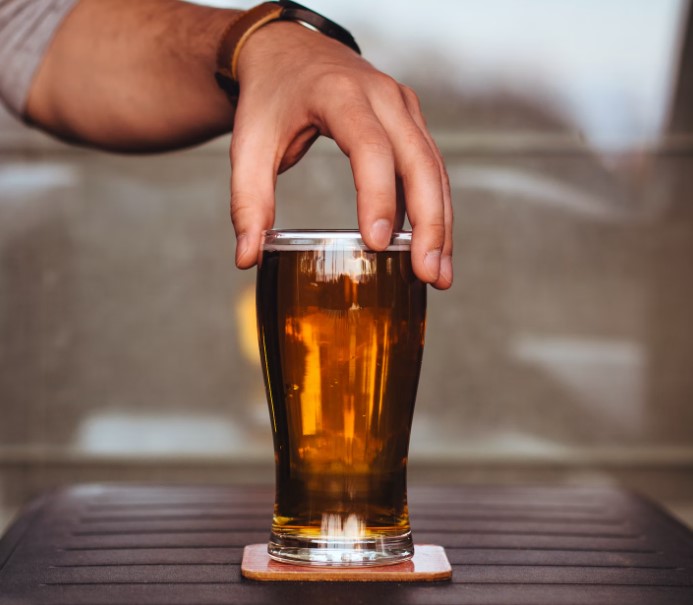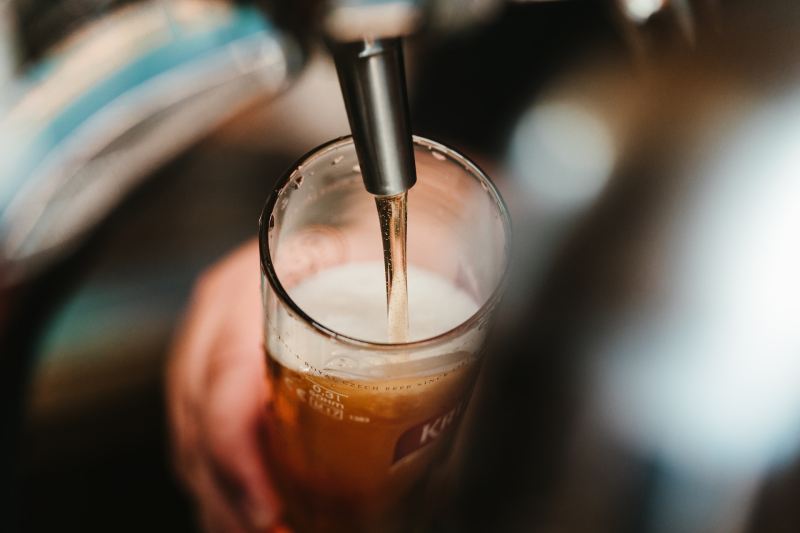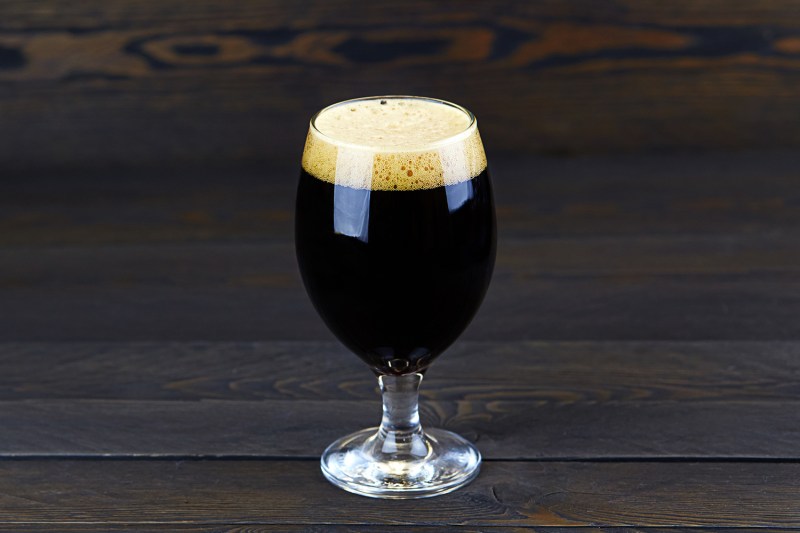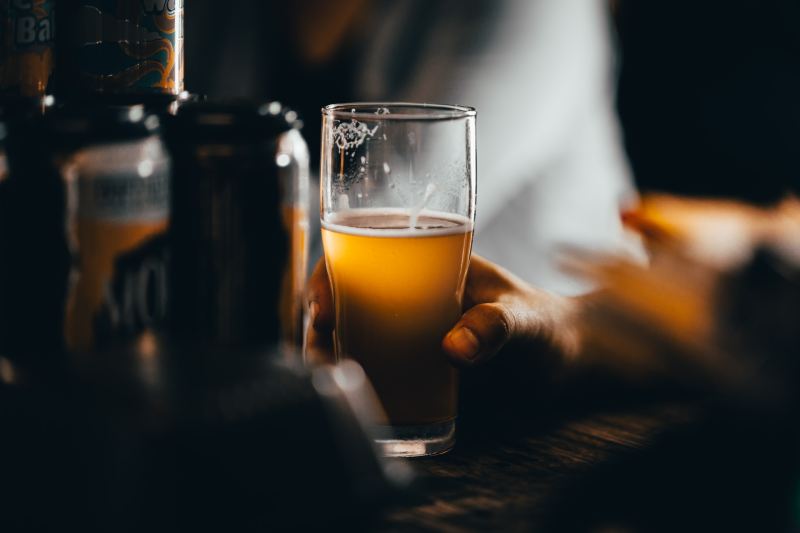
Dry January is coming to a close, presenting an opportunity to check back into some of those liquids we like to indulge in now and again. Fortunately, if you go the route of new beer styles, you can enjoy a beverage that dates back to ancient times and knock out that New Year’s resolution to be more spontaneous.
Granted, more common beer styles can be treated with bizarre adjunct ingredients and techniques. That’s why we’ve seen the emergency of everything from smoothie sour beers to pastry stout beers. But we’re after the natural curiosities — styles lost in time or just so obscure you’d have to go out of your way to taste one.
Read on for the weirdest beer types you’ve rarely heard of.

Seaweed Beer
As the name suggests, this beer employs kelp or seaweed. Hailing from Scotland, this type of beer is actually an homage today, made to mimic what was coming out of the European country from up until roughly the mid-19th century. Back then, Scottish brewers used barley grown on plots to fertilize seaweed. The resulting beers would take on some briny, vegetal notes. Kelpie is perhaps the most widely known, brewed by Williams Brothers Brewing Company. Yet, with seaweed seeing a resurgence in foods and other drinks like gin, we may see more local brewers — especially in coastal states — trying their hand at the style.

Oyster Stout
A British concoction from the height of the stout era in the U.K. (early 20th century), the oyster stout looked to take advantage of what is actually a delicious pairing. Yes, oysters and stouts go pretty well together, and it wasn’t long until some intrepid brewers decided to make the malty beer with the shellfish. As outstanding beer author Jeff Alworth writes in The Beer Bible, “Oyster stouts have enjoyed a minor revival in the 21st Century, and against all odds, are pretty tasty.” He says they tend to feature marine-like flavors but nothing over-the-top and fishy. Top producers like HenHouse Brewing in California are known to release them now and again.

Gruit
Think of Gruit as beer before hops found their rightful place in the picture. In Renaissance times, brewers would conjure herb mixtures to add bitterness and nuance to their beers. These aromatic gruit beers did some of the lifting hops due today, thanks to the fragrances of the many botanicals involved, as well as the phenolics on the palate. Producers would use whatever they could get their hands on, like bog myrtle or elderflowers. Fans of beer cocktails could have fun recreating the style of old, throwing in a dash or two of some complementary herbs the next time they’re enjoying a cold ale. Purists contend that Gruit is not a style but more of a popular addition before the hop takeover. Given the extent of that pre-hop period, we’re going to go ahead and give Gruit a spot on this list.

Adambier
The exact origin of amber is up in the air, but we do know it came from northern Germany a long time ago. The Dortmund-born beer seems to have a history that predates refrigeration by a long shot (and why not? It gets cold in Dortmund in the winter, making it possible to brew). Dark and a little sour, this beer style showcases a robust malt bill while offering some fruit qualities and a higher ABV (around 10%). They tend to be aged in wood and even provide some smoky characteristics, making them a nice option with barbecue.

Beers with Brettanomyces
Brett beers can be polarizing. After all, in some alcoholic arenas (like wine), the inclusion of Brett is considered more of a flaw than a flavor enhancer. What is Brett? A strain of yeast that can yield some pretty aggressive flavors, with medicinal notes that can be a bit feral, tart, and barnyard-esque. When dialed in and balanced out by the other ingredients of a good beer, they can be incredibly complex and intriguing. Just keep in mind that Brett tends to multiply and become more prominent with age, making Brett beer in your cellar all the funkier down the line. Brett can impart iconic characteristics as it tends to do with styles like Flemish ales and Berliner Weisse but can work in other styles, too, like saisons, wild ales, and barrel-aged beers.

Quadruple Imperial Stout
Hold on to your hats as the quadruple imperial stout comes in hot. These are practically liquor store beers, with ABVs anywhere from 15%-20% ABV. They’re great slow sippers in the winter and can stand up to post-meal treats like cheesecake or spice cake. These beers are made to be extreme, taking the Russian imperial stout to the next level. By using plenty of malt as well as some form of fermentable sugar, these beers start with all the fuel needed to ferment into high-octane brews.

Faro Beer
Among the oldest beers in the land, Faro Beer was born in Belgium. The lambic-style beer is reddish-copper in color and is fermented on its own or spontaneously. Lighter and a little sweet, it reminds me of spring. Historically, the faro beer was sometimes made with the leftovers from the lauter tun, hence the slimmer build. Popular lambic producers like Lindemans offer them, and they appeal especially to those who like fruit beers or even off-dry wines.

Small Beer
The ultimate lawnmower or session beer, small beer goes all the way back to the middle ages when drinking the water was not always advised. Enter a low-ABV beer that wouldn’t get you sick. Home brewers like to try out the style, and you’ll see them from craft producers sometimes, although they’ve largely been overtaken by lighter lagers, session IPAs, and the like.
The above eight examples are some of the most obscure beer types on the planet. Be on the lookout for them when you’re at your favorite bottle shop or brewery. They’re a great way to take in some craft beer history and treat your palate to something wholly unusual.
Ready for something a bit more familiar? Check out our pieces on the best beers and trending beer hop types. Raise a glass and support your local craft brewing community.
Editors' Recommendations
- Jeremy Allen White has made ‘the everyman style’ trendy: 5 pieces to buy if you want to steal the look
- How to wear 1970s fashion if you aren’t Harry Styles
- New limited edition everyday carry knife from The James Brand might be the splurge purchase you’ve been waiting for
- What are the best shoes for your suit? The only style guide you need
- The best men’s chukka boots — you need these versatile styles



